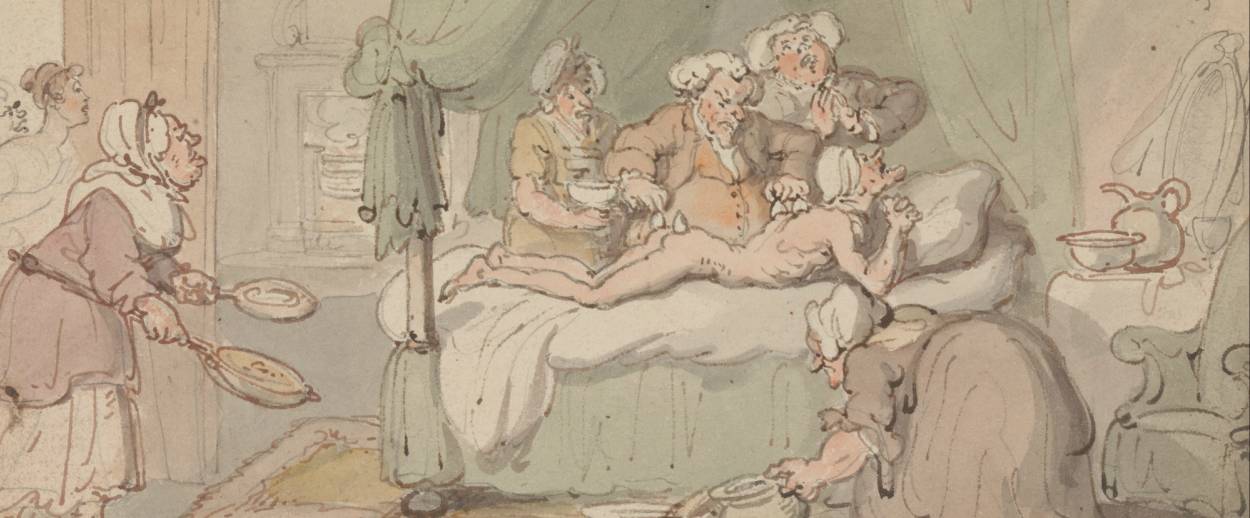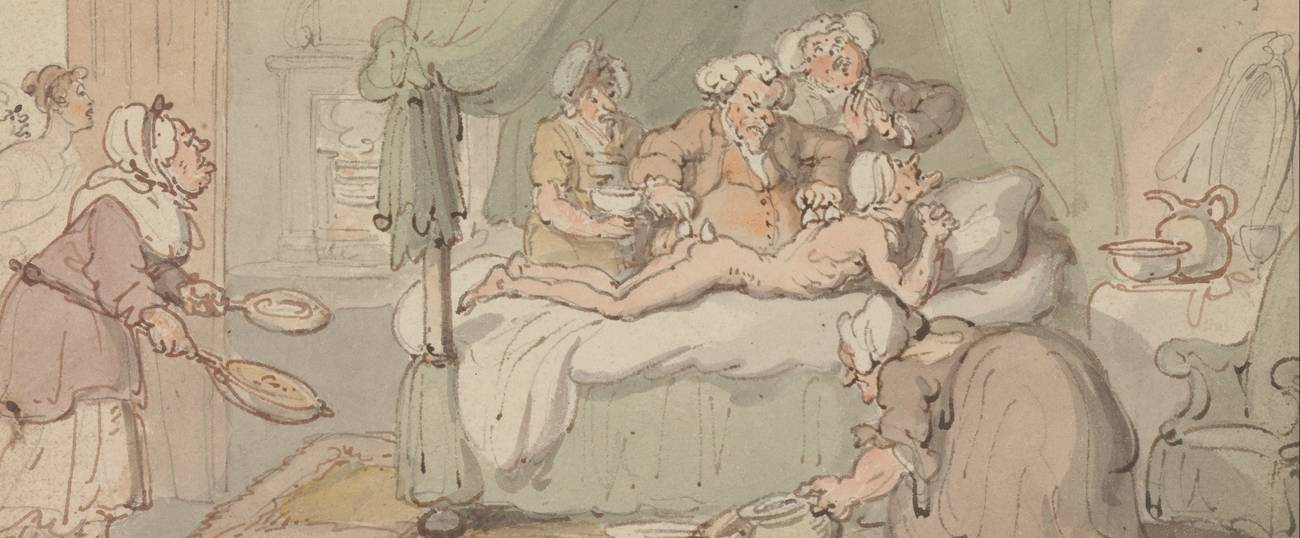Frustrated by the State of the World? Yiddish Has the Perfect Expression for You.
The perfect idiom for our time involves a practice now long gone




No matter where you may be situated on the political spectrum, chances are you’ve experienced some degree of frustration, anger and helplessness over recent months. You may have felt that there’s no effective way to set things right, that no imaginable effort holds any real promise.
You may be right, I’m sorry to say. But take heart. At least there’s a Yiddish expression you can vent with as you shoot down ideas you know are pointless.
It is part of one of the language’s most interesting and expressive sayings, and employs two unusual words.
One means “corpse” and the other a “cupping glass.”
“A what?” you ask? A cupping glass, I answer.
“Cupping” is a form of folk medicine in which suction is created on the skin by the application of a small glass cup and the creation, through heat or a pump, of a vacuum.
Although the practice has never been shown to provide any medical benefit, it was embraced by many societies in the past and enjoys an enthusiastic fandom today as well, even in the U.S. The Washington Nationals’ Bryce Harper is enthusiastic about the practice, as are a number of other American professional and amateur athletes.
The phrase? Ah, yes, the phrase. It’s “Es vet helfn vi a toytn bankes”–“It will help as much as a cupping glass would help a corpse.”
In other words, whether or not a live person, against all medical judgment, would benefit from a cupping session, surely someone no longer among the living would be a poor candidate for the procedure.
The Yiddish expression is the response one might have to, say, the local rabbi’s suggestion that a petition be circulated among synagogues and JCCs to recall the current occupant of the White House, or his contrary congregant’s plan to sue the FBI for harassing the president: May as well cup a corpse.
In “helfn” you likely recognize the Engish word “help,” both words rooted in the Proto-Germanic helpan.
“Toyt” is Yiddish for “death,” a borrowing from the German tot, which was once spelled todt.
As in Todt Hill, a neighborhood in Staten Island that is the highest elevation on the entire Atlantic coastal plain from Florida to Cape Cod. (Don’t say reading this far didn’t teach you anything.) Although some of the area’s palatial homes have in the past been rumored to be residences of high-ranking organized crime figures, and such personalities are well known to sometimes be of murderous inclination, the hill’s name seems to derive not from that fact but rather from a cemetery at the hill’s southwestern ridge that saw its first inert body in 1740.
And let us not, while dealing with the German for death, forget Johann Sebastian Bach’s immortal composition “Komm, süßer Tod, komm selge Ruh” (“Come, sweet death, come, blessed rest”). It is, despite its downer message, one of the composer’s most popular works.
Ah, and what about bankes? It likely comes from the Polish bańka, a “soap bubble,” which, in fact, yields the Polish phrase for a cupping glass: bańka szklana.
Other languages have a similar word for cupping, like the Russian применение банок, which is prononunced primeneniye banok, or the Slovakian bankovanie. The English word “bank,” in its meaning of “a long raised mass of earth or mound,” may also have something to do with bankes. The English word indeed has cognates in Old Icelandic (bakki) and Old Danish (banke), meaning “hill.”
Don’t think that theory is very likely true? Well, feel free to complain to me. But it will help about as much as… well you know.
Rabbi Shafran, whose latest book is “It’s All In The Angle” (Judaica Press), blogs at rabbiavishafran.com.